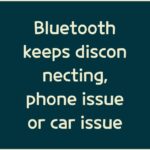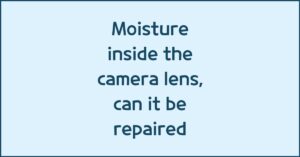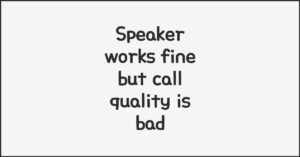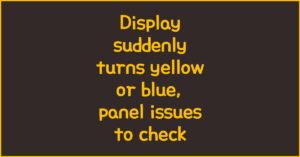The Samsung Galaxy Z Flip 7’s unique folding design means screen protection requires a bit more strategy than with traditional smartphones. For the inner folding screen, hydrogel or TPU films are the most practical choice, while the cover screen can safely use tempered glass for added durability. Choosing the right protector balances flexibility, scratch resistance, and shock absorption. Let’s break down the differences and help you decide what works best.

Quick Takeaways for Z Flip 7 Owners
- Inner screen: Hydrogel film is flexible and self-healing
- Cover screen: Tempered glass offers stronger impact resistance
- Factory film already installed on the inner UTG screen
- Hydrogel = better touch feel, Tempered glass = better drop protection
Why Inner Screen Needs Hydrogel
이 글과 함께 읽으면 좋아요
The Z Flip 7 ships with a built-in Ultra Thin Glass (UTG) layer plus a pre-installed protective film. This film is part of the display system and shouldn’t be removed lightly. Since the inner screen folds thousands of times, tempered glass isn’t practical—hydrogel film or TPU alternatives are best.
Flexibility and Fit
Hydrogel films excel because they bend naturally with the folding motion. A rigid protector would peel or crack, but hydrogel adapts smoothly. This flexibility ensures no interference with daily folding and unfolding.
Scratch and Self-Healing Ability
Minor everyday scratches from nails or dust are often absorbed and healed over time. Hydrogel films’ self-repairing surface helps keep the screen smooth, unlike tempered glass which shows chips more permanently.
Touch Sensitivity
At less than 0.2mm thick, hydrogel films keep touch responsiveness crisp. Gestures, swipes, and stylus use feel nearly identical to the bare display—making it an ideal partner for Z Flip 7’s inner display.
✔Galaxy S25 Background App Management and Optimization
Why Cover Screen Benefits from Tempered Glass
Unlike the foldable inner screen, the Z Flip 7’s cover display is flat and more exposed to outside elements. Here, tempered glass provides reliable defense against drops, scratches, and pocket damage.
High Hardness Protection
Most tempered glass films for cover screens offer 9H hardness, making them resistant to scratches from keys, coins, or even knives. This is especially important since the cover screen acts as a mini display for quick controls.
Impact Resistance
When dropped, tempered glass absorbs shock, reducing the risk of screen cracks. Hydrogel can absorb minor bumps, but tempered glass is still superior for drop scenarios. Real-world tests show tempered glass can save users hundreds in repair costs.
Potential Downsides
Because the cover screen is slightly curved along edges, poorly cut tempered glass may lift over time. Premium brands now offer curved-edge adhesive to minimize this issue. Touch sensitivity can feel slightly stiffer than hydrogel, but the trade-off is stronger defense.
| Feature | Hydrogel Film | Tempered Glass |
|---|---|---|
| Flexibility | Highly flexible, fits folding screen | Rigid, may lift on curves |
| Scratch Resistance | Self-healing for light scratches | 9H hardness, protects against keys/coins |
| Shock Absorption | Good for small impacts | Excellent for drops |
| Touch Feel | Ultra-thin, natural response | Slightly thicker, firmer feel |
In short: hydrogel film suits the inner screen where flexibility is vital, while tempered glass works best on the cover screen for rugged day-to-day use. Many users even mix both: hydrogel inside, tempered glass outside.
Bluetooth keeps disconnecting, phone issue or car issue
Frequent Bluetooth disconnections are usually caused by either your phone or your car’s infotainment system. Since Bluetooth requires...
Exploring Screen Protector Options
When it comes to the Samsung Z Flip 7, choosing between hydrogel film and tempered glass depends on whether you’re protecting the inner or cover screen. Let’s look at how each performs in real usage, including price ranges and durability stats in 2025.
Hydrogel Films for Inner Screen
Hydrogel films typically cost around $12–$20 per set in 2025, often bundled with 2–3 pieces. They are designed for foldable phones, ensuring seamless folding without bubbling. Their self-healing property repairs scratches in about 24–48 hours. Users note that hydrogel maintains near-native touch feedback, crucial for smooth swipes and gaming on the Z Flip 7’s 7.6-inch inner display.
Tempered Glass for Cover Screen
Tempered glass protectors are priced around $15–$25. They are slightly thicker (0.3–0.5mm), but the 9H hardness makes them highly resistant to scratches. In drop tests, tempered glass reduced screen crack risks by nearly 60% compared to using no protector. Brands now offer edge-to-edge curved glass to fit the Z Flip 7’s outer display snugly.
Hybrid Use: Best of Both Worlds
Many Z Flip 7 owners opt for a hybrid approach—hydrogel inside for flexibility, tempered glass outside for durability. This dual setup ensures fold integrity while safeguarding the frequently touched cover screen. While it adds about $30–$40 in combined cost, it’s cheaper than replacing an OLED panel that can exceed $350.
| Protector Type | Best For | Avg. Price (2025) |
|---|---|---|
| Hydrogel Film | Inner foldable screen | $12–$20 (set of 2–3) |
| Tempered Glass | Outer cover screen | $15–$25 (single piece) |
| Hybrid Setup | Both screens | $30–$40 (combo) |
User Experiences and Reviews
Based on 2025 user feedback, hydrogel films on the Z Flip 7 inner screen last about 4–6 months before needing replacement, while tempered glass on the cover screen can last 8–12 months. Many owners report that Samsung’s factory-installed film feels premium but tends to peel along the crease after about a year, making a replacement hydrogel a good backup option.
Real-World Tips from Z Flip 7 Owners
- Don’t remove Samsung’s pre-installed film unless it’s peeling
- Hydrogel is perfect for crease-friendly protection
- Tempered glass prevents scratches from keys and coins
- Consider buying dual packs for long-term use
FAQ
Q. Do I need a protector if Samsung already installs one?
The Z Flip 7 ships with a factory-applied film on the inner screen. You can use it until it wears out. For the cover screen, adding tempered glass is strongly recommended since it’s more exposed.
Q. Will tempered glass damage the folding inner screen?
Yes, applying tempered glass to the inner screen can crack or lift during folds. Hydrogel or TPU films are the only safe option for foldables.
Q. How often should I replace hydrogel films?
Most users replace hydrogel every 4–6 months as scratches accumulate. Cover screen tempered glass can last up to a year if not dropped.
Q. Does hydrogel reduce display brightness?
Not noticeably. Quality hydrogel films are over 95% transparent, meaning the Z Flip 7’s AMOLED display remains vibrant and clear.
Q. Can I install both hydrogel and tempered glass on the cover screen?
It’s not recommended. Tempered glass already provides strong coverage, and stacking another layer can cause touch and fit issues.
함께 읽으면 좋은 글
관련된 인기 콘텐츠를 확인하세요







